 , Ajmer (November): , Ajmer (November): |

The well - known and marked with largest participation of all the festivals of Rajasthan. Pushkar is an important pilgrimage s well as the venue of a mammoth cattle fair, bazaars, auctions, music and sport are hightlight of this event.
|
 Camel Festival, Bikaner (January): Camel Festival, Bikaner (January): |

An enchanting desert city which come alive with music and dance. It is fast ganing popularity as the visitor finds an opportunity to see some unusual folk performances, camel race, camel dance etc. here.
|
 Nagaur Fair, Nagaur (January - February): Nagaur Fair, Nagaur (January - February): |

Essentially an animal fair, it provides an opportunity to participate in some of the local sports.
|
 Desert Festival, Jaisalmer (January - Febreary): Desert Festival, Jaisalmer (January - Febreary): |

One of the most popular of all festivals, it is a journey into the heart of the desert the golden city of Jaisalmer that has a chram of its own. A true show on the sands which attracts even the much travelled visitor.
|
 Baneshwar Fair, Baneshwar (January - February): Baneshwar Fair, Baneshwar (January - February): |

A religious festival with simple and traditional rituals. This fair is the center of attraction of a large number of tribals from the neighbouring state of Madhya Pradesh and Gujrat who join their brethren from Rajasthan in offering prayers to lord shiva.
|
 Gangaur, Jaipur (March - Apil): Gangaur, Jaipur (March - Apil): |

A festival devoted to goddess Parvati, the consort of Lord Shiva. It is time for young girls to dress up in their finery and pray for grooms of their choice while the married women pray for the well-being of their husbands. This 18-day festival is laced with various activities and culminates in a grand procession marking the arrival of Shiva to escort his bride home.
|
 Mewar Festival, Udaipur (March - April): Mewar Festival, Udaipur (March - April): |
 A festival to welcome the spring sesion. There is song, dance, processions, devotional music and fire work where almost every body participates.
A festival to welcome the spring sesion. There is song, dance, processions, devotional music and fire work where almost every body participates.
|
 Elephant Festival, Jaipur (March - April): Elephant Festival, Jaipur (March - April): |

A festival to celebrate holy, this is a great occasion for the visitor to watch several elephant sports and also play this festival of colour. A show is organised with the elephant turning out in there best finery.
|
 Summer Festival, Mount Abu (June): Summer Festival, Mount Abu (June): |

Organized in the only hill station of Rajasthan, this is the coldest place at this time of the year. Folk dances and the general atmosphere of gaiety prevails in this tiny hill resort and the tourist has ample time to relax and enjoy him self.
|
 Teej, Jaipur (July - August): Teej, Jaipur (July - August): |

A festival to mark the advent of monsoon. Procession, women dressed in bright colours and a lot of merriment prevails during Teej essentially a women's festivals, it is interesting to watch them enjoying in groups and at various bazaars where they turn up to shop in all their finery.
|
 Marwar Festival, Jodhpur (October): Marwar Festival, Jodhpur (October): |

A festival devoted mainly to the music and dance of the Mawar region. This is the festival that allows the visitor to understand and enjoy the folk traditions of this part of the state.
|
 Urs Ajmer Sharif, Ajmer (According to Lunar calendar): Urs Ajmer Sharif, Ajmer (According to Lunar calendar): |

Held in a the memory of the revered Sufi Saint Khawaja Moinuddin Chisti, it is an occasion for thousand of believers to congregate at the shrine and offer their prayers. All of Ajmer seems to take on a festive air and several programmes are organized to mark the festival. |
 Onam Festival, Kerala (August-September) : Onam Festival, Kerala (August-September) : |

Onam is the biggest festival in the Indian state of Kerala. Onam Festival falls during the Malayali month of Chingam (Aug - Sep) and marks the homecoming of legendary King Mahabali. Carnival of Onam lasts for ten days and brings out the best of Kerala culture and tradition. Intricately decorated Pookalam, ambrosial Onasadya, breathtaking Snake Boat Race and exotic Kaikottikali dance are some of the most remarkable features of Onam - the harvest festival in Kerala.
|
 Khajuraho Festival of Dances, Khajuraho (February-March) : Khajuraho Festival of Dances, Khajuraho (February-March) : |
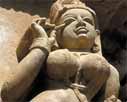
It is also the setting of the Khajuraho Festival of Dances which draws the best classical dancers in the country every year, who perform against the spectacular backdrop of the floodlit temples.
|
 Barsana Holi, Barsana (March) : Barsana Holi, Barsana (March) : |
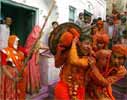
48 km. from Mathura at Barsana, is celebrated the famous "Latthmaar Holi" of Braj. Tradition has it that Krishna from Nandgaon use to come to Barsana to play Holi with Radha alongwith his Gopi friends. The Gopis after merriment chased away the Gopas of Nandgaon by beating them with "lathis". So it came to be known as the 'Latthmar Holi' of Barsana.
|
 Karva Chauth, India (October-November) : Karva Chauth, India (October-November) : |
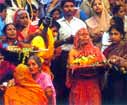
This festival falls on nine days after Dussehra, on the fourth day of the dark fortnight of Kartika. Karva Chauth is held by married Hindu woman for the safety and prosperity of their husbands. The day is spent in complete fasting till the rise of the moon and it is worshipped by women. Four days later, is the festival of Ahoi Astami, when women fast and pray for the welfare of their children. Followed five days later, by a series of festivals culminating in Diwali, the festival of lights on Kartika Amavasya
|
 Janmashtami, India (August-September) : Janmashtami, India (August-September) : |
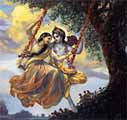
Janmashtami is the most important Hindu festival celebrating the birthday of Lord Krishna. This festival is followed by Hartalika Teej, Ganesh Chaturthi, Anant Chaturdashi, and Pitra Visarjan Amavasya devoted to making of oblations to the pitras (dead ancestors) and is called Pitra Paksha
|
 Baisakhi, Punjab (April) : Baisakhi, Punjab (April) : |
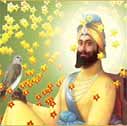
Baisakhi is a seasonal festival with a special accent. It is celebrated all over the state on the first of Baisakh. This is the time when harvest is gathered in and the farmer exults in the fulfillment of his year's hard work. He joins the merry-making with full gusto and does not mind walking for miles to be able to do so. Since this fair is also an expression of prosperity, singing and dancing constitute its most enchanting features. The Punjab's famous dances, Bhangra and Giddha are inextricably linked with this festival.
|
 Durga Puja, West Bengal (September-October) : Durga Puja, West Bengal (September-October) : |
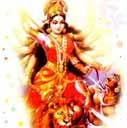
The largest Bengali festival is Durga Puja, held in the Bengali month of Aswin (October). Images of the ten-armed goddess are worshipped in ancient houses and at pandals, erected specially for the Puja. After the four-day ceremony, the images are immersed in the river. Durgapuja is the most important festival in the city of Kolkata.
|
 Kali Puja, West Bengal (October-November) : Kali Puja, West Bengal (October-November) : |
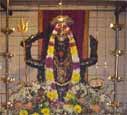
Kali Puja is primarily a Bengali festival, held in accordance to the lunar calendar around the first week of November. The Goddess Kali is worshipped at night on one night during this festival. Kali Puja is light-up night for Kolkata, corresponding to the North Indian festival of Diwali (pronounced Dipabali in Bengali), where people light candles in memory of the souls of departed ancestors. This is also a night of fireworks, with local youth burning sparklers and crackers throughout the night. Kolkata had to pass legislature a few years back to ban fireworks which break the 65 decibel sound limit, as ambient noise levels were going up to 90 decibels or more in parts of the city.
|